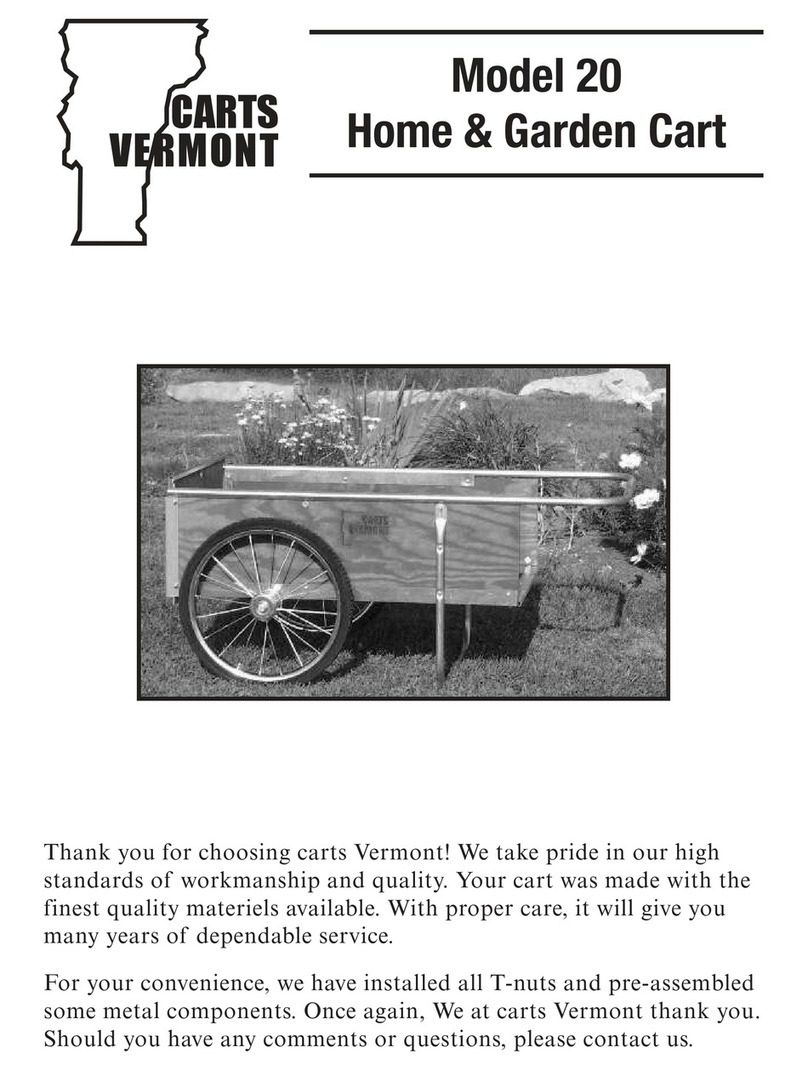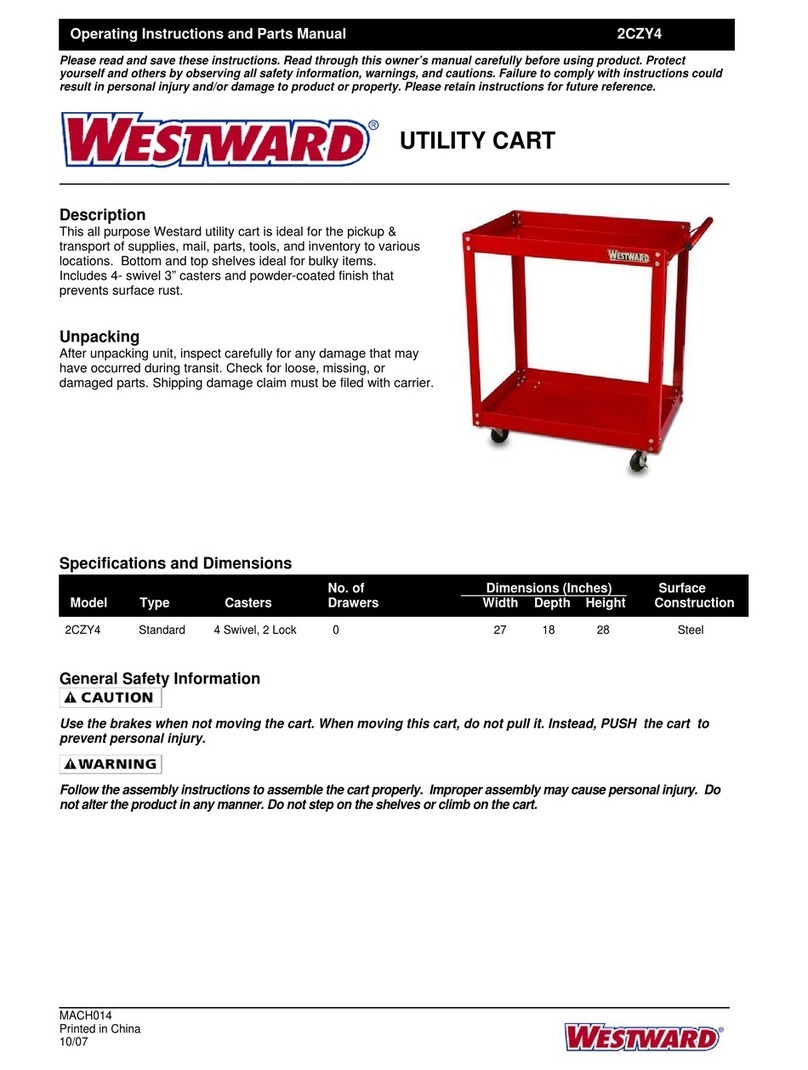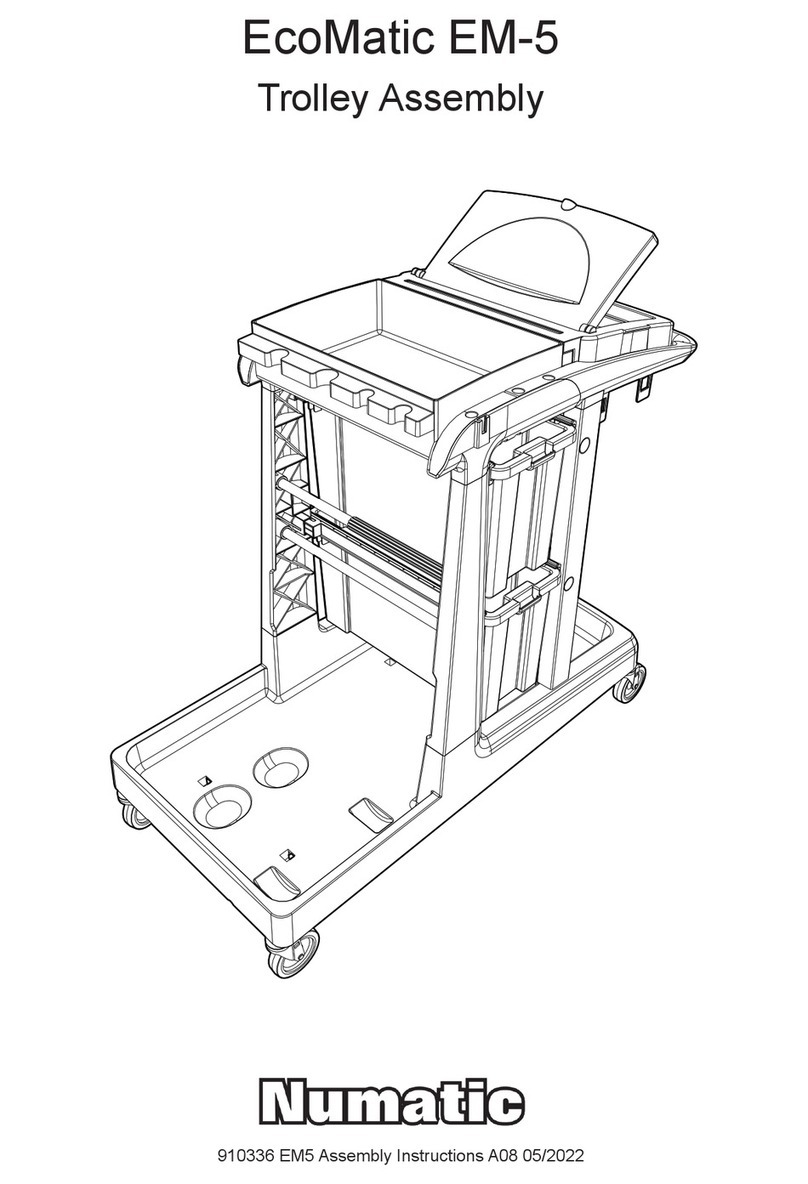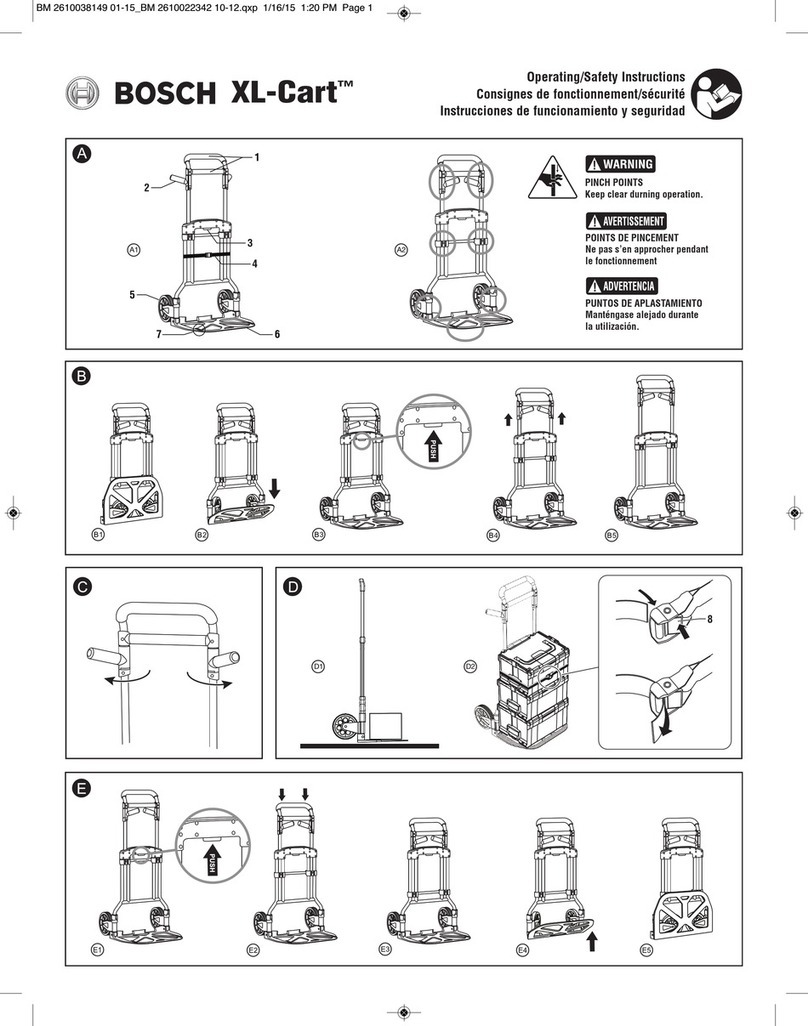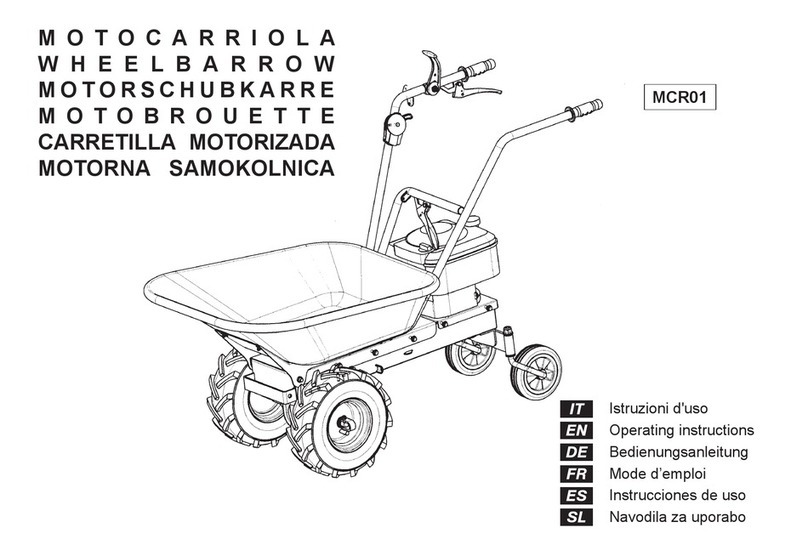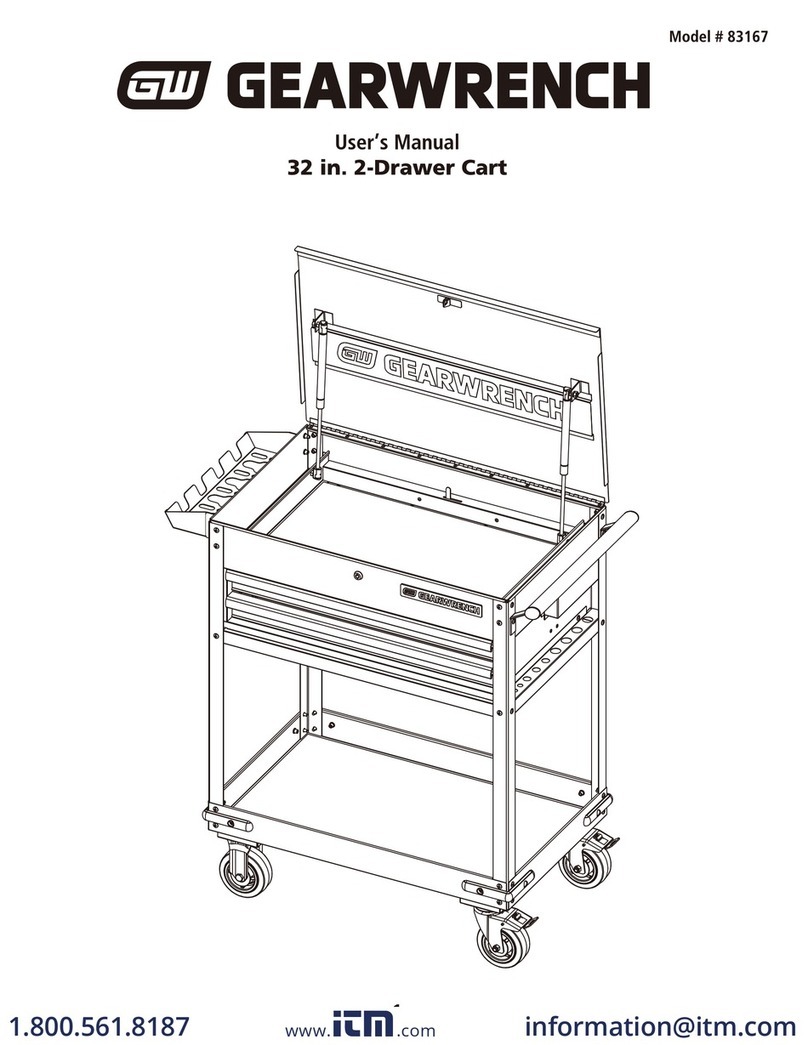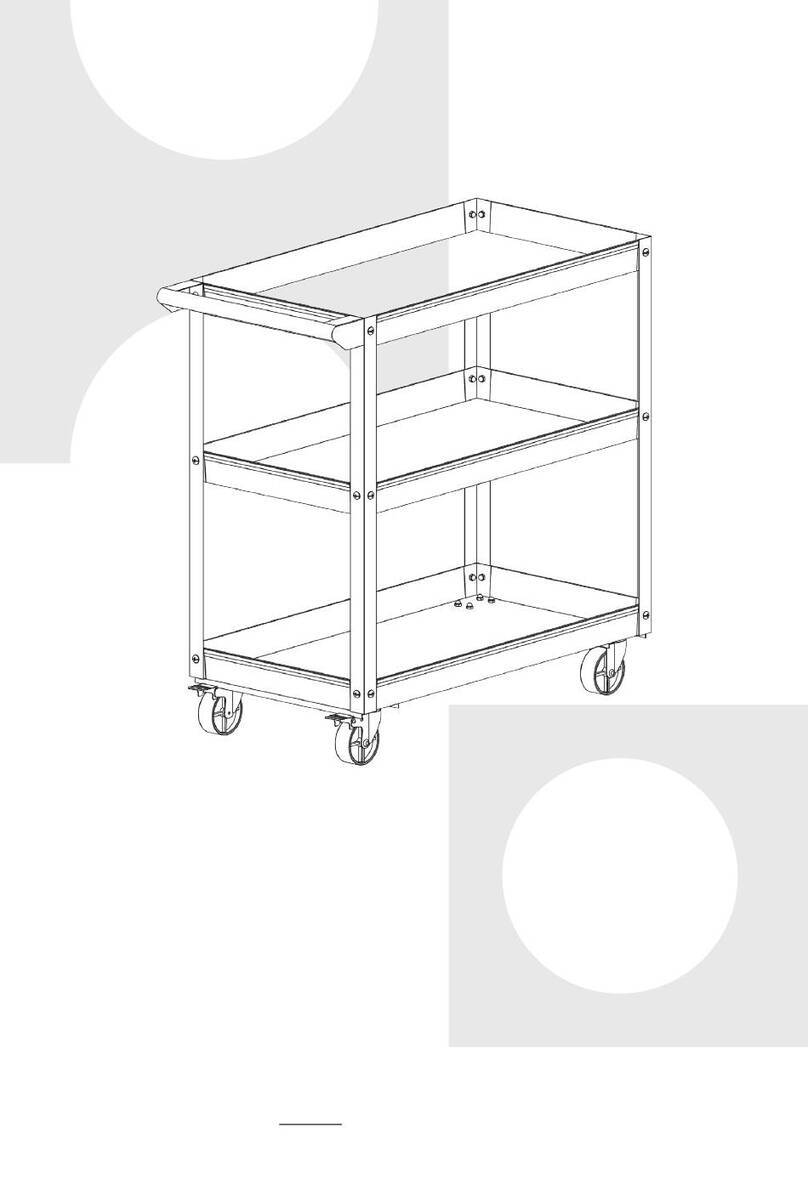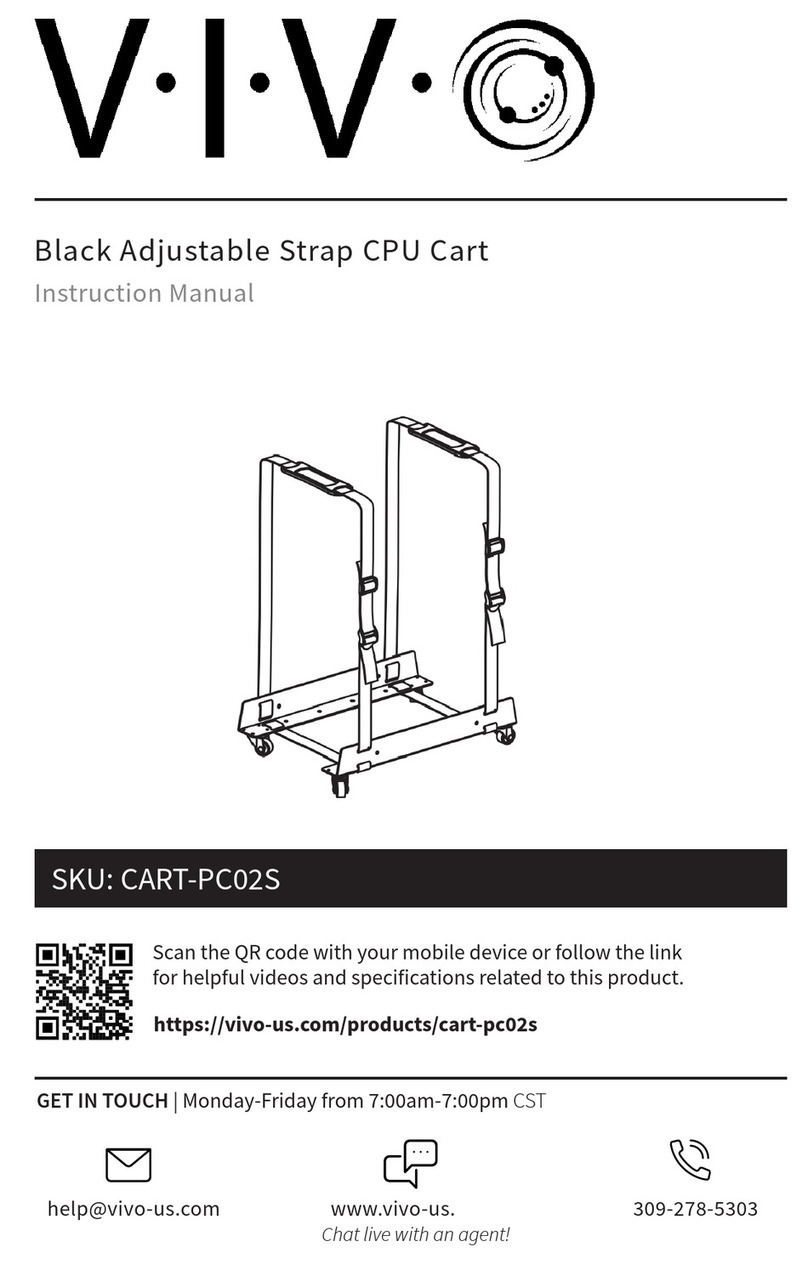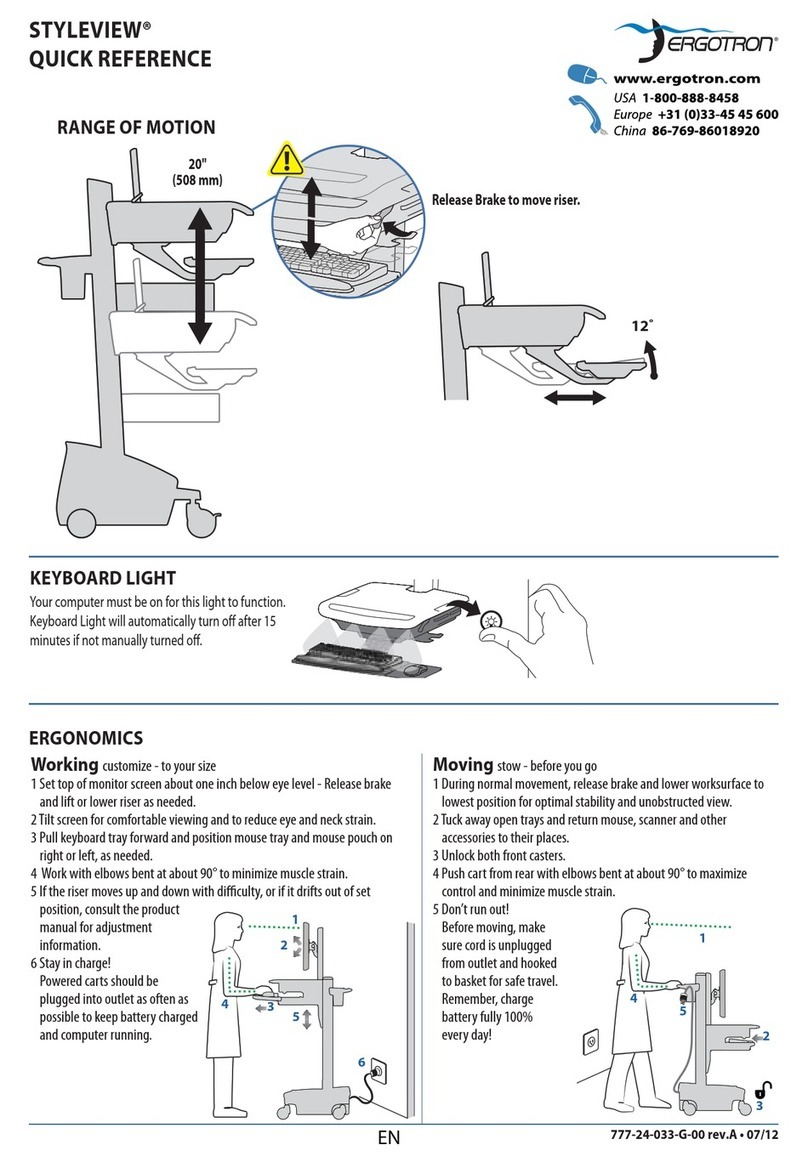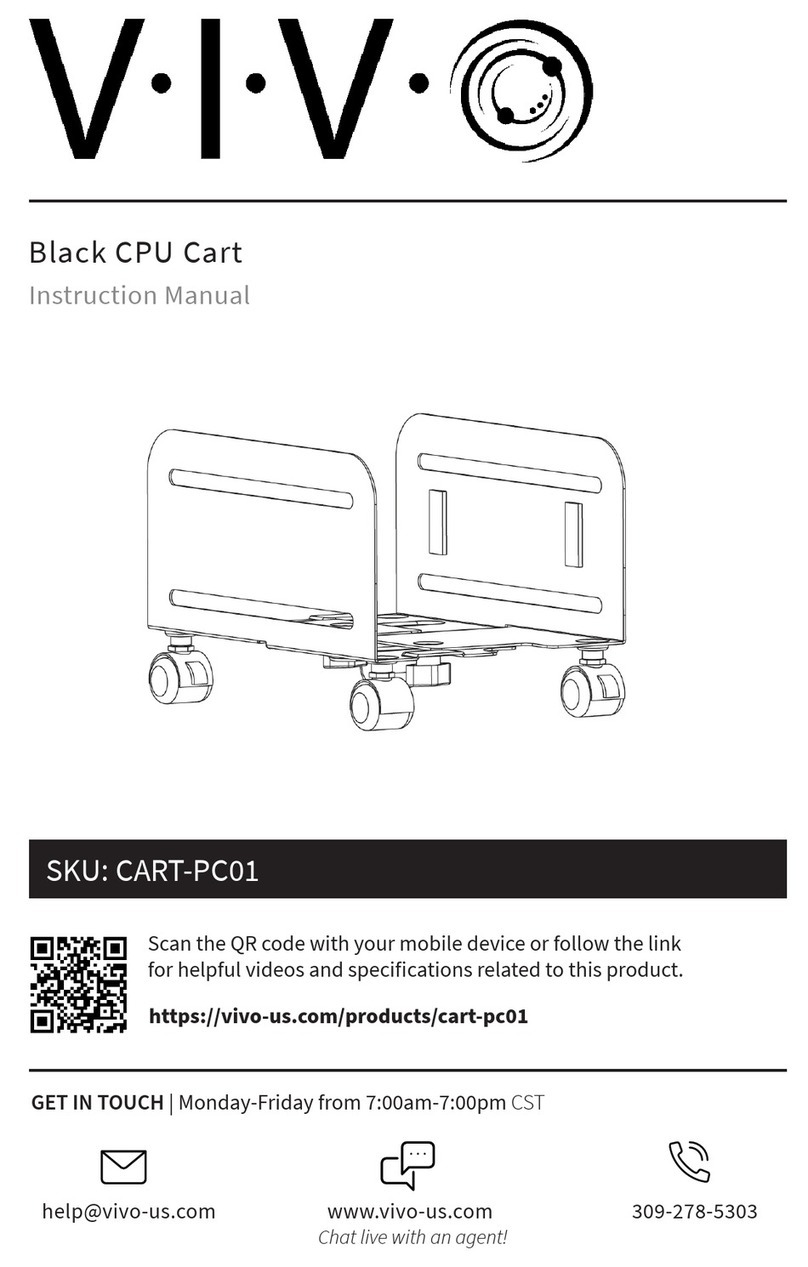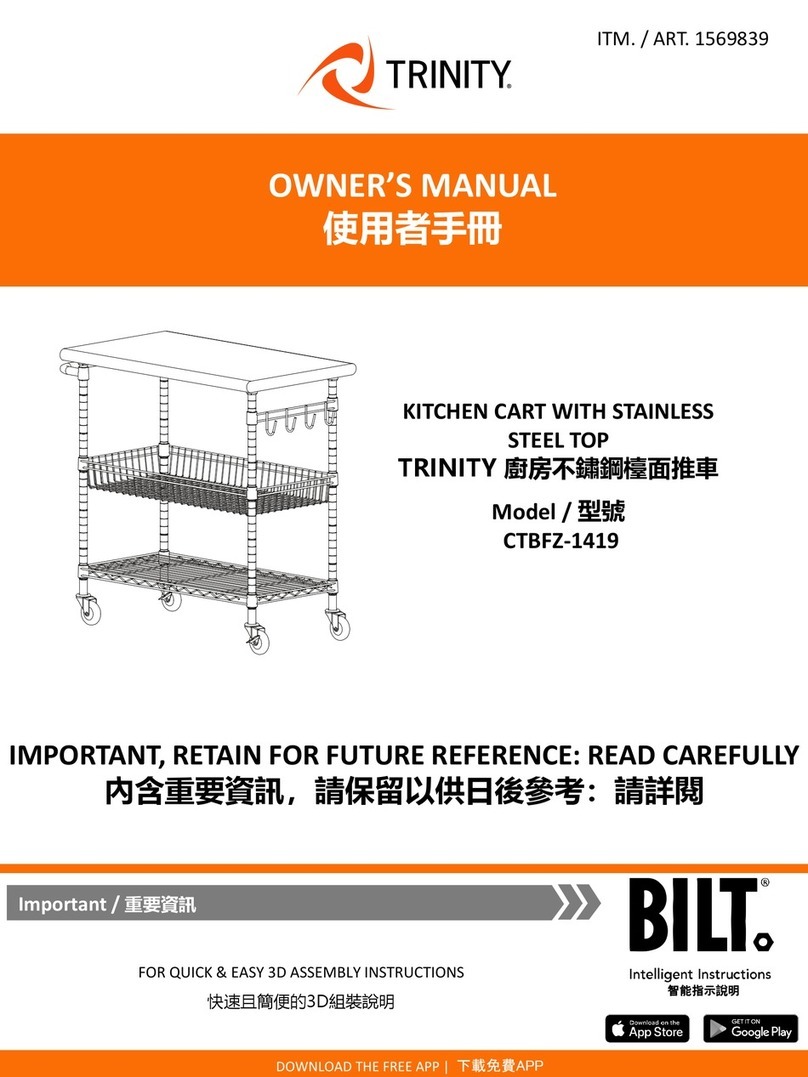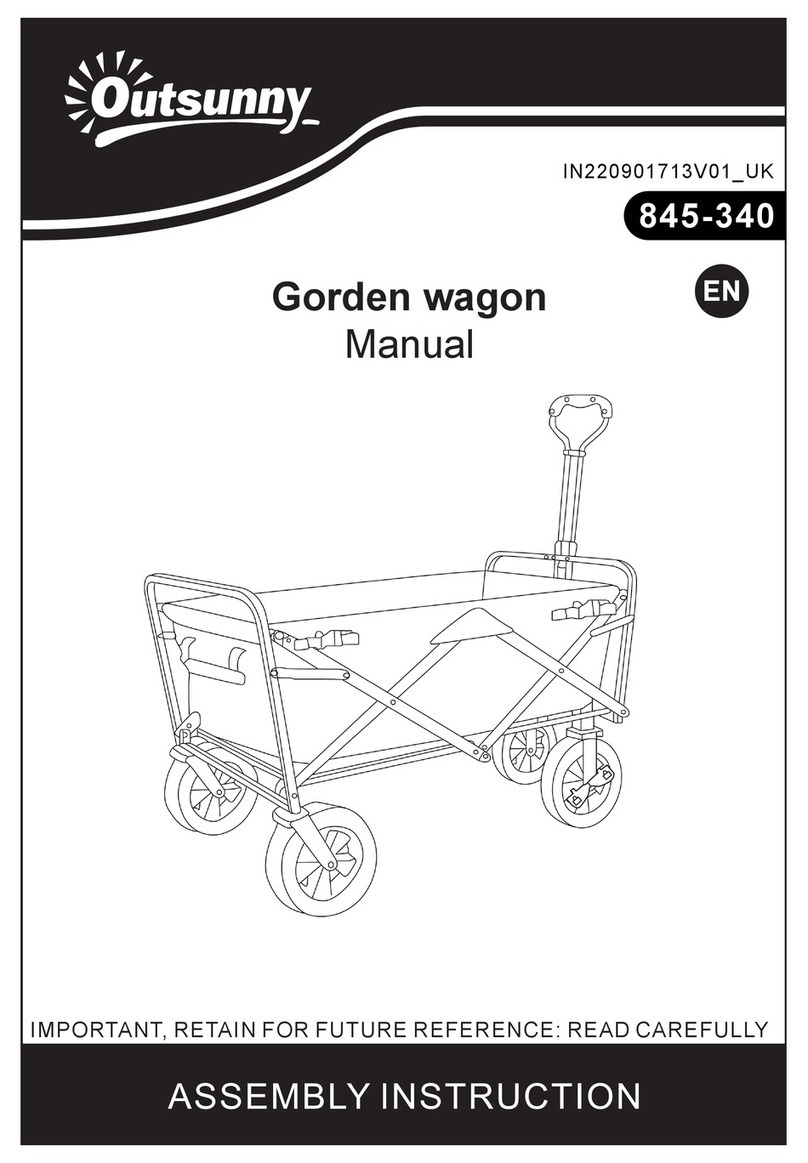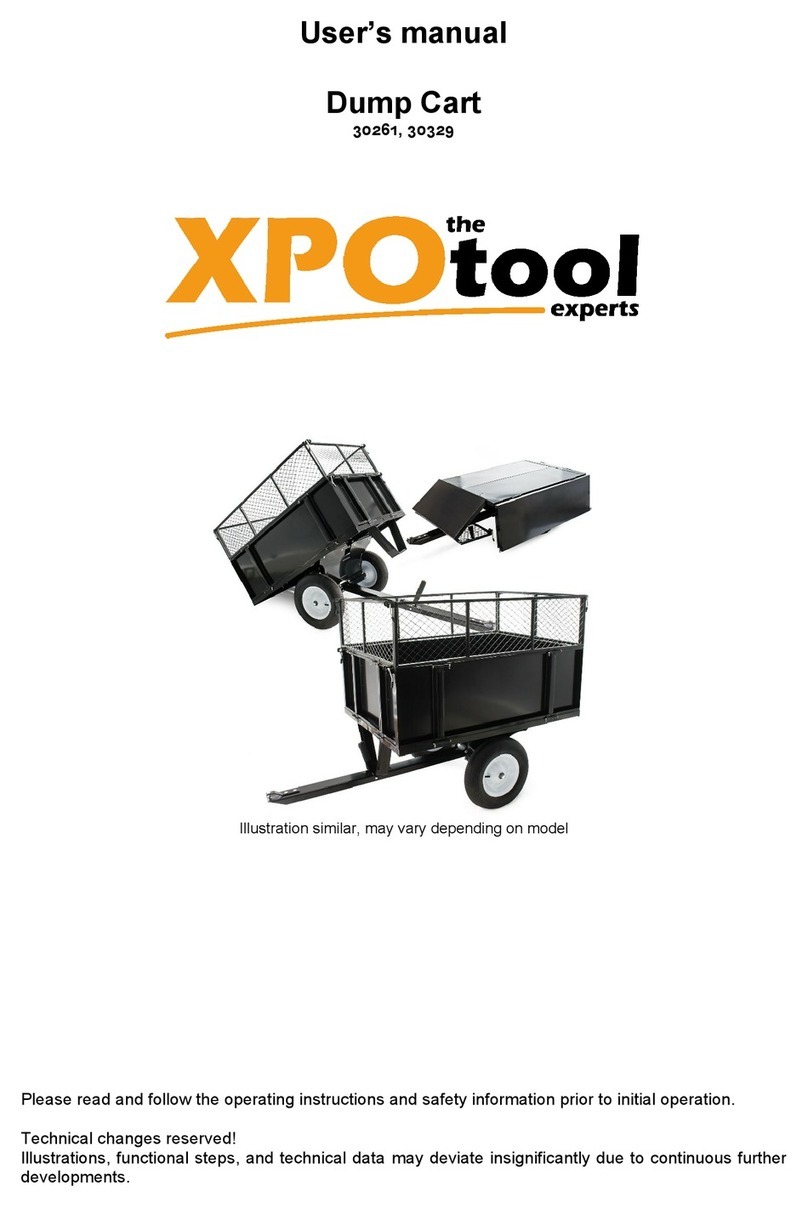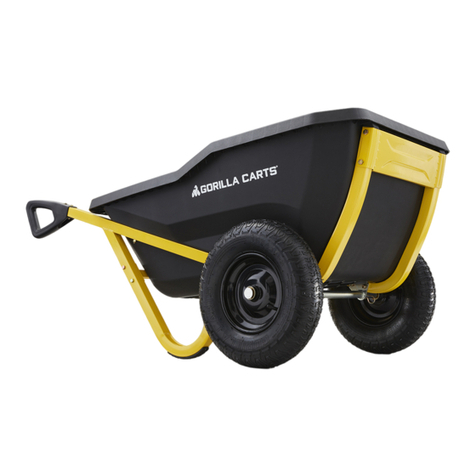
fuoriuscite di combustibile dal serbatoio.
- In caso di fuoriuscita non tentare di avviare il motore, ma allontanare la macchina dall’area interessata evitando di creare fonti di accensione
finché non si sono dissipati i vapori della benzina
- Rimettere a posto correttamente i tappi del serbatoio e del contenitore della benzina.
8Attenzione al tubo di scarico. Le parti vicine possono arrivare a 80° centigradi. Sostituire i silenziatori usurati o difettosi.
9 Non usare la motocarriola su pendenze superiori ai 35°, potrebbe ribaltarsi. Sui pendii lavorare sempre in salita o discesa e non trasversal-
mente, porre sempre la massima cautela nei cambi di direzione.
10 Non caricare pesi superiori a quelli riportati sull’etichetta posta all’interno della vasca od oggetti che sporgano in altezza oltre la visibilità del
conducente ed in larghezza oltre le dimensioni della vasca, poiché questo potrebbe compromettere la stabilità e la guidabilità della motocarriola.
11 Sganciare la vasca, per il rovesciamento, rimanendo esclusivamente dalla parte del manubrio. Fare attenzione alla natura del carico, se è
ghiacciato o appiccicoso ci sono rischi di ribaltamento.
12 Prima di iniziare il lavoro con la macchina procedere ad un controllo visivo del serraggio di tutti i componenti, dell’integrità macchina e della
pressione dei pneumatici, quindi verificare che tutti i sistemi antinfortunistici, di cui essa è dotata, siano perfettamente funzionanti. E’ severa-
mente vietato escluderli o manometterli.
13 Ogni utilizzo improprio, le riparazioni effettuate da personale non specializzato o l’impiego di ricambi non originali, comportano il decadimen-
to della garanzia e il declino di ogni responsabilità della ditta costruttrice.
DISPOSITIVO DI SICUREZZA
Tutte le motocarriole sono dotate di dispositivo antinfortunistico. Detto dispositivo causa il disinnesto della frizione e di conseguenza l’arresto della
macchina in marcia avanti o a marcia indietro, al rilascio della relativa leva di comando; inoltre questo dispositivo evita l’inserimento della retromarcia
mentre è inserita la marcia avanti.
Dispositivo innesto ruote a tre posizioni: (Fig.2) La motocarriola è dotata di uno speciale dispositivo chiamato “FORCELLA A TRE POSIZIONI”.
Nella posizione 1(libero) la ruota gira libera sull’albero così da permettere gli spostamenti della macchina a motore fermo.
Nella posizione 2(bloccato) la ruota risulta solidale con l’albero, diventando motrice, cioè pronta per il lavoro, normalmente la più usata. Questa
posizione è obbligatoria quando si usa la motocarriola su piani in pendenza.
Nella posizione 3(semidifferenziale) la ruota ha la possibilità di fare circa un giro libera sull’albero, così da permettere inversioni di marcia.
ATTENZIONE Tutti gli interventi sulla forcella a tre posizioni, devono essere eseguiti a motore spento e su una superficie piana.
MONTAGGIO DELLA MOTOCARRIOLA
La motocarriola viene consegnato a destinazione, salvo accordi diversi, parzialmente smontata e sistemata nel suo imballo. Per rendere la motocarriola
funzionante bisogna completare il montaggio delle parti smontate osservando la seguente procedura.
MONTAGGIO PIASTRA RIBALTABILE CON VASCA (Fig. 3)
Prelevare la piastra e la vasca già assemblati fra loro (part.1) dall’imballo, sovrapporre il tutto alla macchina in prossimità dei perni di sbloccaggio (2),
ed esercitando una pressione su di essi (non contemporaneamente) bloccare la piastra ribaltamento facendo passare i perni (2) attraverso i fori (3)
presenti sulla piastra.
2
ITALIANO
